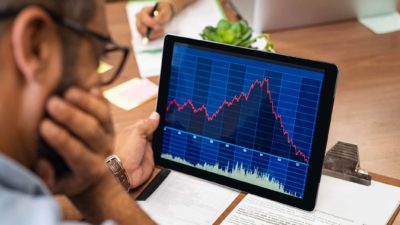The coronavirus curve may be showing encouraging early signs of flattening in Australia, but that's unlikely to sway economists warning that we are in for a deep global recession.
The daily growth rate of infections slowed to around 15% from the 25% to 30% range in the previous week, according to the government's latest figures.
But ASX investors should prepare for a second wave and I don't necessarily mean of COVID-19. That remains to be seen as countries like China, which has largely overcome the pandemic, try to avoid another outbreak.
Second wave from the pandemic
What I think is almost guaranteed as a second-round impact is unemployment and loan defaults. We've already seen mass layoffs but the jobless rate is likely to get worst despite the government's rumoured stimulus to pay a $1,500 wage subsidy every fortnight and a push to protect consumers and business from landlords and banks.
The problem is that household indebtedness is a global issue. It isn't only Australians who have been using leverage to fund consumption.
This problem is exacerbated by the fact that the recession is likely to take longer to overcome than the medical emergency. Remember we had a falling standard of living issue due to the low wage-growth environment pre-coronavirus?
Headwinds for the economic recovery
The COVID-19 recession will only magnify the issue and consumers will have little room to increase their spending in the recovery even with low interest rates.
Further, the uncoordinated global response to the catastrophe will leave economies recovering at different times. This will also drag out the malaise.
Positioning your ASX portfolio
If you believe the economic doomsayers, you should be thinking about how best to position your ASX portfolio for the stronger and longer downturn.
To be sure, equities tend to perform poorly in a recession and there will be few places in the market to hide.
But during challenging times, large caps tend to outperform small caps. This gives S&P/ASX 200 Index (Index:^AXJO) (ASX: XJO) stocks an edge.
Also, investors will need to be especially alert to seemingly defensive shares that will turn out to be bear-traps.
Avoid the yield traps
One group of stocks that I think will outperform are those with a sustainable dividend yield of at least 5%. You might think that it's shooting fish in a barrel given that so many ASX stocks have fallen so hard, thus lifting their yields.
But many of these companies will have to cut their dividends in the face of a recession – this includes infrastructure stocks.
For instance, Transurban Group (ASX: TCL) looks vulnerable to me. If the economy slows significantly, so will traffic on its toll roads. If debt becomes an issue, that will pose an additional risk. Let's not also forget that management is in dispute with the Victorian government.
Also consider this, the stock's FY19 yield sits at just under 5%, and during the GFC, management slashed the dividend to just 22 cents per share.
A better option in my view is Telstra Corporation Ltd (ASX: TLS) as its revenues are less impacted by economic activity given that our mobiles and internet are seen as basic necessities.
Good as gold
Another sector that will hold up well isn't known for dividends. This is the gold sector as the precious metal has historically outperformed during times of economic stress.
The gold price is up by more than 7% this calendar year to US$1,630 an ounce, and I suspect it will go higher. If the US becomes the new epicentre for the outbreak while Australia and China show that they can control the outbreak, the US dollar is likely to come under pressure.
A falling greenback will lift the price of gold.
The ASX gold producers I would be looking at are those with scale and little debt. In that respect, stocks like Evolution Mining Ltd (ASX: EVN) look attractive.








